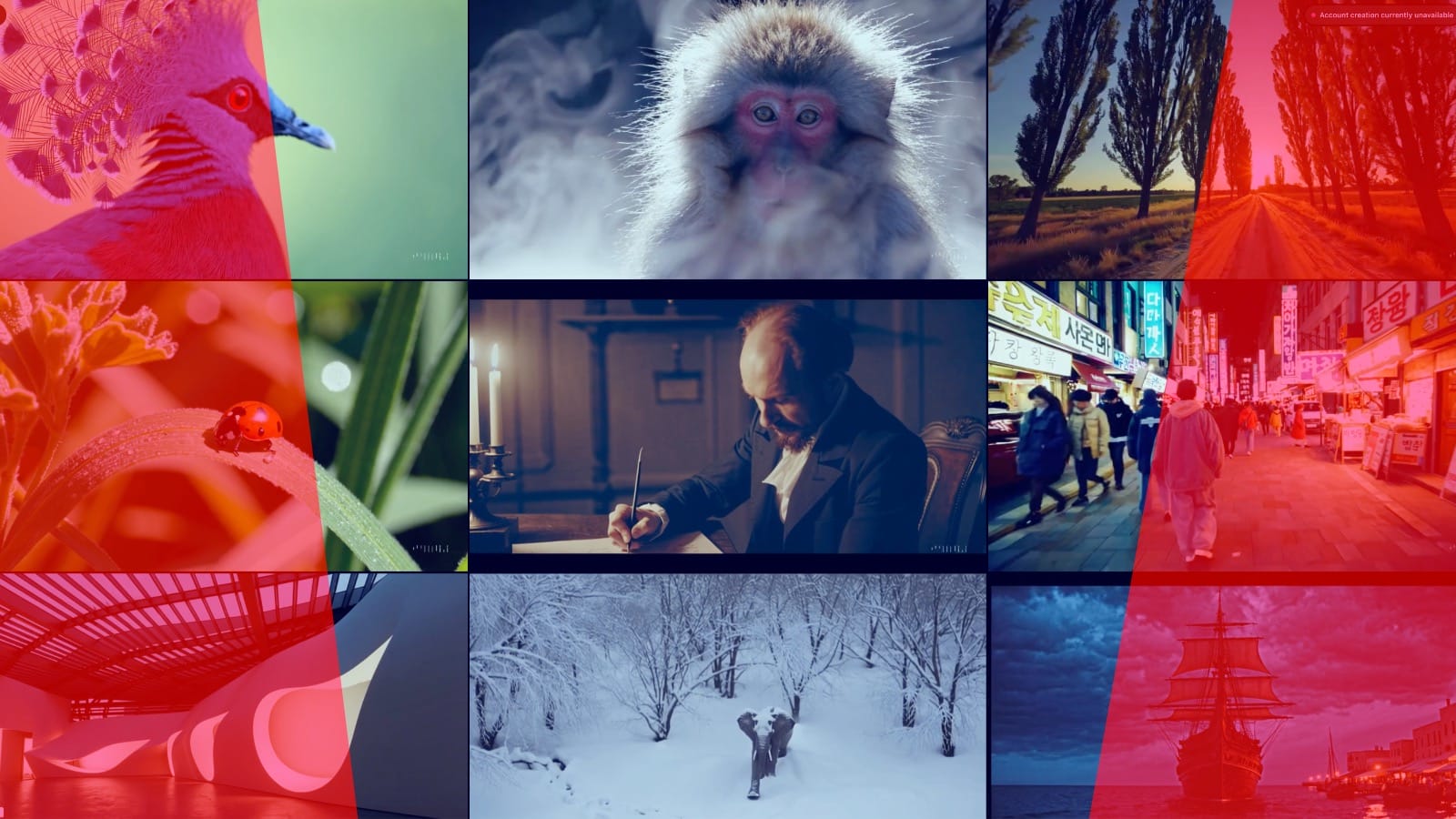OpenAI has released Sora, its AI-powered video generation technology, making it available to ChatGPT Plus and Pro subscribers through a dedicated website. The company announced the launch as part of its “12 Days of OpenAI” holiday series, introducing an upgraded version called Sora Turbo that offers improved speed compared to the model previewed in February 2024.
The technology allows users to generate videos ranging from 10 to 20 seconds in length, with resolutions from 480p to 1080p, and in various aspect ratios including landscape, square, and vertical formats. ChatGPT Plus subscribers ($20/month) can create up to 50 videos monthly at 480p resolution, while Pro subscribers ($200/month) receive access to higher resolutions, longer durations, and unlimited generations at slower speeds.
OpenAI has developed a specialized interface for Sora that includes grid and list views for generated content, as well as a Storyboard mode enabling users to create multiple linked clips with seamless transitions. The platform supports input through text prompts, images, and existing videos, while featuring both Featured and Recent feeds to showcase community creations.
Tech reviewer Marques Brownlee (MKBHD), who received early access to the platform, reported that while Sora can produce impressive realistic footage, it still exhibits limitations such as hallucinated details, unnatural physics, and inconsistent object behavior. OpenAI has implemented strict safeguards against generating likenesses of real people and content involving violence or explicit themes.
The release follows controversy when beta testers leaked the technology on Hugging Face, protesting OpenAI’s handling of the testing program and compensation for contributors. The company has integrated safety measures including C2PA metadata for transparency, visible watermarks by default, and internal verification tools to identify Sora-generated content.
The service is currently available in most countries except the United Kingdom, Switzerland, and the European Economic Area. OpenAI acknowledges the technology’s current limitations and states it is working on making it more affordable while developing tailored pricing options for different user types by early 2025.
Discussion on Hacker News
Some highlights from the discussion of Sora’s launch on Hacker News:
- Limitations of Current AI: Users express frustration with generative AI’s inability to accurately replicate complex visual concepts from simple prompts, emphasizing the need for more detailed input.
- Information Density in Prompts: The discussion highlights that current text prompts (typically a few hundred characters) are insufficient to convey the necessary detail for precise image or video generation, necessitating more comprehensive descriptions.
- Role of Human Artists: Many participants suggest that AI should act as a co-pilot to human artists, allowing for collaboration where human creativity guides the AI’s output, rather than relying solely on AI for high-quality content.
- Open Source vs. Closed Source: There is a strong sentiment that open-source models, like Tencent’s Hunyuan, are outperforming closed-source options like Sora, as artists prefer customizable tools that allow for fine-tuning.
- Generative AI’s Impact on Creativity: The conversation discusses how generative AI may lead to homogenization in creative outputs, with many AI-generated works resembling each other, thus potentially stifling true artistic innovation.
- Economic Considerations: Some participants argue that the economic pressures of content creation will lead to a reliance on AI-generated outputs, which may prioritize speed and cost over artistic quality and originality.
- Audience Perception: It is noted that audiences may not discern the differences between AI-generated and human-created content, which could lead to a decline in standards for quality and creativity in media.
- Physical Realism Issues: Generative AI struggles with accurately depicting motion and physical interactions, leading to unnatural artifacts in video outputs that can disrupt viewer immersion.
- Future of AI in Art: The dialogue suggests that as generative AI tools become more accessible, they could democratize art creation, allowing more people to engage in creative processes, albeit with varying levels of quality.
- Concerns Over Misinformation: Participants express worries about the potential for AI-generated content to blur the lines between reality and fiction, particularly regarding the impact on children’s understanding of the world and media literacy.
Sources: OpenAI, VentureBeat
